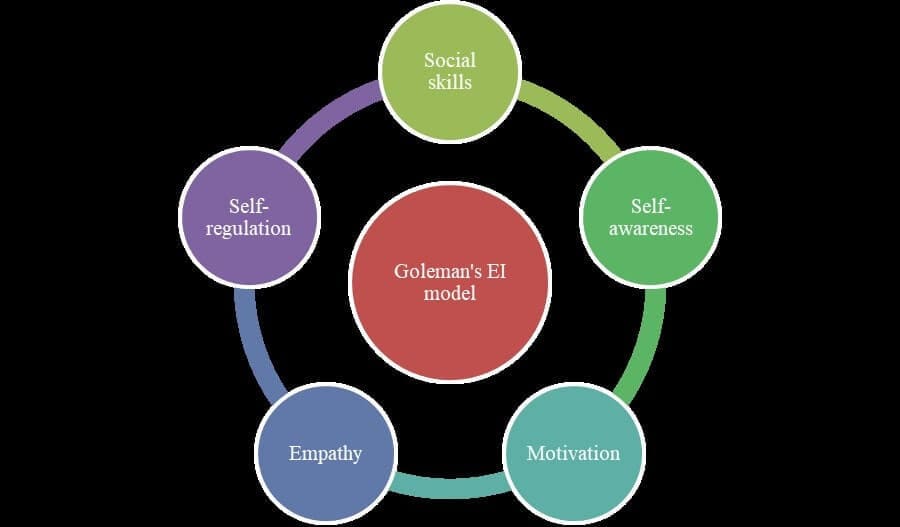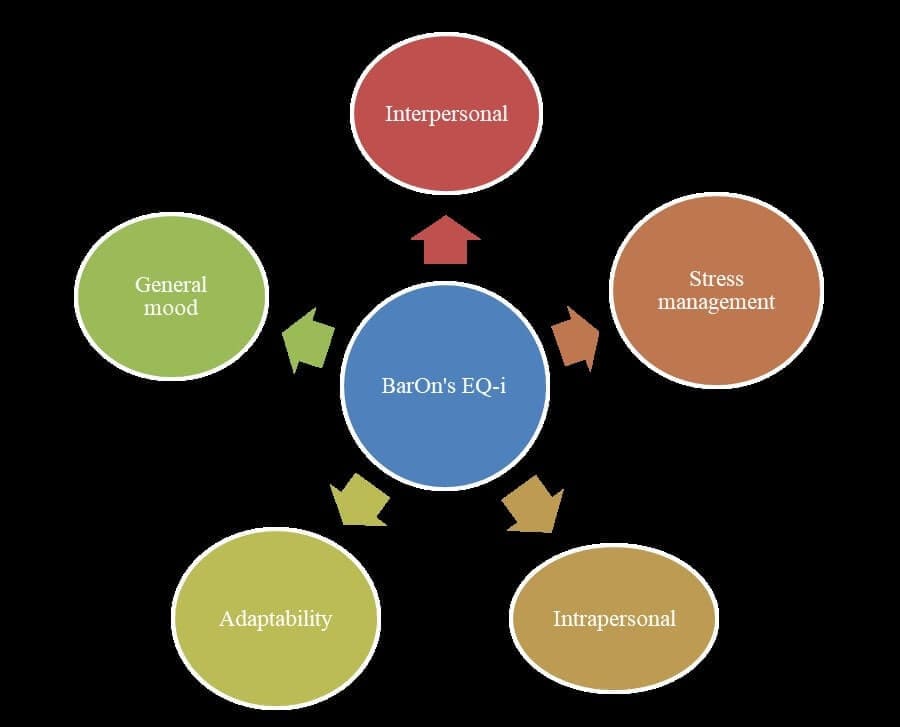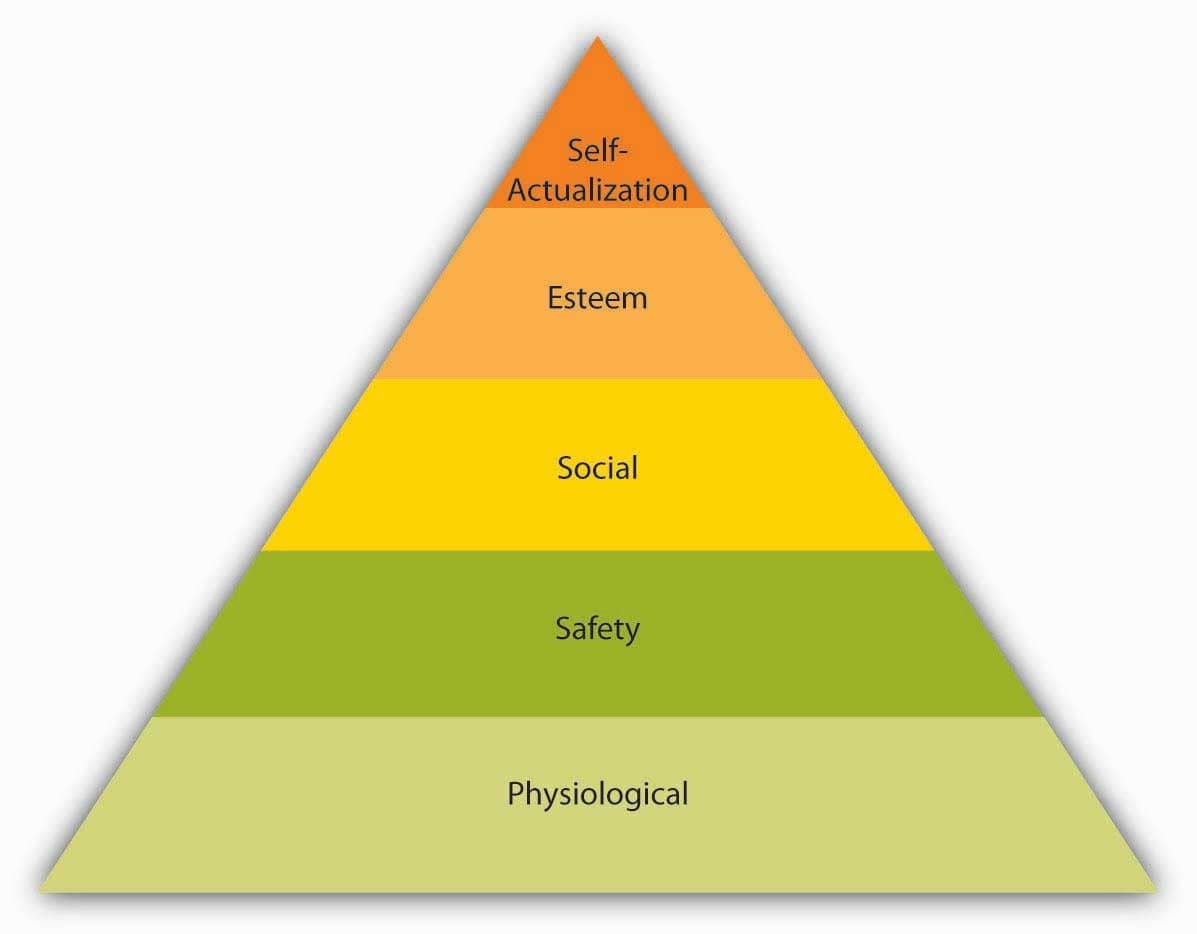Organisational Leadership and Effective Management
Introduction: Organisational Leadership at Unilever
Leadership and management are all about working effectively taking its entire people together. Unilever is a company in the UK that prepares products for the daily lives of people so that everyone can lead a better life. This organization consists of many employees as well as officials that include, the CEO, chief HR officer, chief finance officer, chief science officer chief legal officer, and so on. Everyone plays a significant role in taking the company forward.
Section 1
1.1 Analysis of two leadership styles
Leadership is the ability to work by taking its followers along with them. An organization must maintain a leadership strategy to lead the company toward success. There are various leadership theories and techniques which include, Authentic leadership, Mc Gregor’s theory X and theory Y, Goleman’s leadership style, generational leadership style, transformational leadership style, situational leadership theory of Hersey and Blanchard as well as Tannenbaum Schmidt’s leadership strategy. These leadership models are effective in their way and they help the leaders to lead their followers properly.
Authentic leadership and McGregor's theory X and Theory Y
Authentic leadership style:This is a type of leadership where the leaders make their goals, inspire their employees to fulfill the goals, and have transparent behavior with their workers. The follower of this kind of leadership focuses on long-term results and vision, integrities, transparency, as well as, the skill of listening to others, and they lead with heart (Yavuzer, 2020). These leaders keep familiar behavior with their people and share their success with the complete team. McGregor's theory X and theory Y:
Theory X and Theory Y are two concepts of McGregor’s leadership theory. These are based on the managers’ assumptions about their people. Theory X describes managers’ assumptions about their people, who dislike their jobs and are unmotivated (Boyatzis, 2018). These workers are to be supervised at every step of their task and they are to be controlled and threatened to get the job done on time. On the other hand, Theory Y is just opposite to Theory X. Under this theory, managers have a positive opinion of their workers. The managers assume that workers are happy to work, involve themselves in decision-making, and are self-motivated toward their tasks. Workers are found to take responsibility, work with creativity, and need very little direction to work properly.
My ability to use the leadership model
Both leadership styles have two different strategies and techniques. The leader can use these leadership criteria. They apply the authentic leadership style and McGregor’s Theory X and Theory Y during two different situations. I have used both leadership models in different situations. Authentic leadership style was very effective in my case where workers felt familiar with and gave complete effort to do the job. On the other hand, Theory X and Theory Y were not very effective as I had made the wrong assumptions about some workers without knowing their issues.
The result I received for using the leadership style
The use of two different leadership methods gave different results. Based on my assumptions about the workers, Theory X and Theory Y resulted negatively. I have counted some workers under Theory Y, thus I have directed them very less to complete the job, and hence they gave negative results. On the other hand, the result of using the authentic leadership strategy was a positive one. Co-workers and the employees were familiar with each other and everyone worked very well. They shared innovative ideas and finished the job by giving an attractive result. This leadership model was very successful, engaging, and innovative.
Using leadership style depending on people and situation
All leadership styles are not always applicable as leaders have to undergo various situations and they are to work with different kinds of people. Based on the situation and people, leaders need to change their leadership style (Maiorano and Vagni, 2019). As for the example, a leader is following transformational leadership, but suddenly new workers are employed the leader has to change their leadership style as new workers working criteria are unknown to them. In that. The change in this leadership strategy will help the leader get positive outcomes. Similarly, taking another example, where leaders follow McGregor’s Theory X and Theory Y. The leaders know some employees very well but some workers are unknown to them thus leaders have to change leadership techniques to deal with all the employees.
1.2 Theories of Emotional Intelligence (EI) and its effect
Emotional intelligence helps in building strong relationships with their co-workers to achieve a goal. It enables leaders to handle relationships positively as well as judiciously. It brings the ability to connect emotionally with their people brings a positive working culture and increases efficiency as well as productivity (Robles‐Bello et al. 2021). Leaders need to have strength in balancing their emotions at the workplace to make the task effective. It has positive effects as it develops a better environment at the workplace, easy to adjust with employees, improves teamwork quality, brings self-awareness, and improves self-control.
EI model of Goleman’s and BarOn’s Emotional Quotient Inventory (EQ-i)
Goleman brought forward the concept of emotional intelligence which consists of various components. The concepts of Goleman’s emotional intelligence at the workplace are social skills, motivation, self-regulation, self-awareness, and empathy (Agarwalla et al. 2020). All these components affect the work environment, efficiency as well as decision-making strategy of the leader.
BarOn’s EQ-i was prepared to access the bar on emotional intelligence. This is counted through scores, where a score within the range of 90 to 110 is considered the standard score for emotional and social functions (Nasrin and Morshidi, 2019). If the score reaches above 110 then it would be considered as the presence of more emotional as well as social skills.

Figure 1: Goleman’s emotional intelligence model
Similarly, if the score goes below 90 then it would signify the need for enhancing social and emotional skills. It includes different models to determine the range, which are;
Intrapersonal: It consists of assertiveness, self-awareness, independence, and so on
Interpersonal: It is the combination of interpersonal relationships with their people, social responsibility toward them, and empathy.

Figure 2: BarOn’s Emotional Quotient Inventory
Stress management: It is the control over own stress and the capacity to tolerate it.
Adaptability: It includes problem-solving capacity, flexibility, and testing reality.
General mood: Happiness and positive thinking come under this criteria.
Effect of EI on other models
EI is important and emphasizes the leadership models as it is necessary to have control over own emotions. All the leadership models are different from each other in their respective ways as every model follows different concepts and methods (Doyle and Thompson, 2021). While working with any of these theories the leader needs to keep in mind the components of EI. Leaders’ empathy, social skill, motivating skills, self-awareness, and self-regulation need to be controlled and maintained. These will help the leaders to make situational decisions, make transparent leaders, and so on (Novitasari et al. 2020). It would help them to follow the democratic leadership theory and make unbiased decisions, thus EI is a very important part of the leadership that affects all sorts of leadership strategies.
EI to enhance leader’s performance
Leaders play a significant role in taking an organization toward success. They work with many employees and lead them toward their goals, thus leaders must have control over their emotions (Chukwusa, 2018). It helps the leader to make unbiased decisions and maintain both interpersonal and intrapersonal relationships with their workers. A good range of EI helps the leader to positive outcomes and enhances their performance at the workplace.
EI to enhance others’ performance
Leaders are there to lead their followers in a proper way to take the organization toward success. EI also affects the performance of the worker, because the unbiased and practical opinion of leaders makes their employees happy and maintains a proper working atmosphere (Keerthana and Babu, 2018). Employees feel happy and familiar over there, thus they give complete effort to take the organization forward with innovative and attractive ideas.
Section 2
2.1 Set directions and ability to communicate with others
Being an employee of Unilever it is essential to understand the company’s mission or the set objectives. As a team leader, it is my responsibility to guide my fellow teammates properly so they can understand and follow the working culture (Atlam et al. 2018). At Unilever health and well-being of all employees are of prime importance. In addition to the company’s rules and regulations regarding health, I will ensure that I monitor their daily health to be informed about their health condition in advance.
Again being a team leader it becomes my responsibility to set our team goals and follow them to achieve success. Generally, most of the important goals include
Improving communication skills: This is a long-term goal that cannot be achieved overnight but can be gradually developed with time. We speak to different people learn about different cultures and communicate accordingly (Graça et al. 2019). It is also essential to build good comradeship among each other that will have a clear vision and there will be no misunderstanding between each other.
Improve performance and productivity of the team: It is essential to keep track of the quality of performance of the team members and help them improve them. It will not only help to build an individual's ability but also will increase productivity, which will eventually lead to the overall growth of the company.
Improve financial stability: The financial stability of the company is very important to survive in the market. Being a project head it is important to produce products that are cost-effective and will attract a lot of consumers because they are cost-effective.
It is also important to review these goals from time to time as they may become old-school methods in the days to come.
It is important to set individual goals for every team member so that they remain focused and strive to achieve their set goals and put in their maximum effort. As a project leader, it is my responsibility to make sure that every member of the team is set a goal that is to be achieved, based on an individual’s capability and skills and the amount of work they can do (Rasouli and Tsotsos, 2019). It becomes the project leader’s responsibility to assign the correct job to the correct individual so that they can do and complete the job easily and efficiently. It is also important to review the performance at the end of the year by going through the daily activity of an individual throughout the year, thereby it will become easy to give feedback and look into the areas to improve on.
2.2 The Ability to motivate, delegate, and empower others
It is the responsibility of a project team leader to have the skill to be able to motivate, delegate and empower their team members so that they can achieve their maximum potential while working for the company Unilever (Boutry et al. 2018). Here are the two most important models that are used by project leaders to motivate their teams.
Maslow’s Hierarchy of Needs: According to the motivational model by Maslow the hierarchy of needs is set by a pyramid that represents the ranking of human needs. The first needs of Maslow’s model include physiological needs (Van Vaerenbergh et al. 2019). It includes the need for air, water, and food. These three things are the basic rights of an individual without which an individual will not be able to live. Once people secure their physiological needs they are then concerned about their safety. Next is the social needs which are the bond with other humans (HAMZA and ABDELMONEM, 2018). These bring about a sense of self-esteem within an individual as an individual keeps a desire of being respected by people around them, and feels a sense of being important to others' emotions and feelings. The individual also likes to be appreciated for their effort or the work done (Shaturaev, 2022). The highest in the hierarchy is self-actualization which is being what one is capable of being.

Figure 3: Pyramid of Maslow’s model.
ERG Theory: According to ERG theory basic human needs are classified into three categories that include Existence, Relatedness, and Growth. This model has a lot of similarities with Maslow’s model (Hartlapp, 2020). Here Existence corresponds to Maslow’s physiological and safety needs. Relatedness is similar to social needs and finally, growth refers to esteem and self-actualization in Maslow’s model.
_658515d9969b1.jpg?t=1703220697063)
Figure 4: Human needs in ERG theory.
The responsibility of a team leader also includes the fact that they can trust and give responsibilities to an individual based on his or her capabilities. As a project head, it has been a very mixed-bag experience as sometimes It has been difficult to entrust one the same way compared to others (Leigh and Darvill, 2019). I tend to give responsibilities to an individual based on their capabilities which sometimes makes me think twice before giving any responsibility to any individual. Thereby it becomes difficult for me to trust every individual to complete a given task.
It is vital to provide experience to an individual about how to complete a particular task. This will help the individual to complete the task efficiently. In my case, if I train an individual to perform a particular task I will use my experience related to the task and then train the individual accordingly.
2.3 A Personal Development plan (PDP) to improve the ability to lead
|
Leadership abilities |
Reasons for choosing these abilities |
Goals |
Activities |
Resources and supports |
Implication of cost |
|
Open communication |
Being a leader of a team it is essential to communicate openly. As openly communicating will bring about different thoughts and suggestions which can be required to solve a critical problem (Pérez Cavana, and Lowe, 2019). Open communication will bring about innovative ideas that can be implemented to get a better quality product. It eliminates communication barriers and is very effective in providing vital information at a critical time. |
To have the ability to communicate with every individual without any hesitation. |
To be able to talk to people without any distractions like phones, computers, and television (Darvill and Leigh, 2019). To be able to think clearly about what to communicate. |
Various websites and internet resources helped me to learn traits of open communication. Also took a book from a friend of mine to learn about open communication. |
Only an internet charge was required. No additional charges. |
|
Conflict resolution |
Conflict of interest among employees can lead to the decline of teamwork. Thereby failing to lead by example and failing to meet the required goals set by the team. To be a good leader it is very essential to be able to solve conflicts within the team so that prosperity and unity are maintained. Possessing such an ability makes a leader feel secure that he/she will be able to manage if there is any problem. |
To be able to have that self-confidence will help in solving conflicts. |
To understand the matter of conflict. Providing the optimum solution without being too much biased on someone. |
Different internet websites provide various resources to learn conflict resolution. Received an e-book from a friend of mine to learn to manage conflicts. |
Internet charge only. |
|
Time management |
Projects have to be done within the mentioned time to deliver the product to the consumer on time. This is where time management is vital as it teaches every individual to be able to finish the job on time (Hardy et al. 2021). A leader must be able to manage time to inspire the team to complete their task on time. |
Need to be able to manage time effectively. To be punctual in delivering products on time. |
To practice the 60-minute game. This will help to be very subjective (Shaturaev, 2022). Build a puzzle as it can improve their ability to think critically. |
Various internet websites provide resources to learn the traits of time management. |
Internet charge only. |
Table 1: PDP plan
It is to be concluded that possessing leadership is important to be successful in maintaining an organization like Unilever. It still requires a lot of improvement in the quality of the product to satisfy the consumer which can be achieved by improving the quality of products at minimum rates so that they can be easily targeted by the average consumers in the market to increase sales.
References
Agarwalla, S., Chandra, B., Kundu, G.K. and Poddar, S., 2020. Psychometric properties of BarOn emotional quotient inventory youth version among Bengali children. IAHRW International Journal of Social Sciences Review, 8(4-6), pp.143-147.
Atlam, H.F., Alenezi, A., Alassafi, M.O. and Wills, G., 2018. Blockchain with the Internet of things: Benefits, challenges, and future directions. International Journal of Intelligent Systems and Applications, 10(6), pp.40-48.
Boutry, C.M., Negre, M., Jorda, M., Vardoulis, O., Chortos, A., Khatib, O. and Bao, Z., 2018. A hierarchically patterned, bioinspired e-skin able to detect the direction of applied pressure for robotics. Science Robotics, 3(24), p.eaau6914.
Boyatzis, R.E., 2018. The behavioral level of emotional intelligence and its measurement. Frontiers in Psychology, 9, p.1438.
Chukwusa, J., 2018. Autocratic leadership style: Obstacle to success in academic libraries. Library Philosophy and Practice, p.1.
Darvill, A.L. and Leigh, J.A., 2019. Promoting transition resilience through personal development planning: an evaluation of the perspectives of preparation for the transition of final year undergraduate nursing students. International Journal of Practice-based Learning in Health and Social Care, 7(1), pp.47-63.
Doyle, R.A. and Thompson, A.E., 2021. The influence of stereotype threat and implicit theories of emotion on gender differences in emotional intelligence. The Journal of Men’s Studies, 29(2), pp.131-155.
Graça, J., Godinho, C.A. and Truninger, M., 2019. Reducing meat consumption and following plant-based diets: Current evidence and future directions to inform integrated transitions. Trends in Food Science & Technology, 91, pp.380-390.
HAMZA, A. and ABDELMONEM, M., 2018. THE RELATIONSHIP BETWEEN TRANSFORMATIONAL LEADERSHIP AND EMPLOYEE EMPOWERMENT CERTAIN EGYPTIAN SPORTS FEDERATIONS. Ovidius University Annals, Series Physical Education & Sport/Science, Movement & Health, 18(2).
Hardy, T.M., Hansen, M.J., Bahamonde, R.E. and Kimble-Hill, A.C., 2021. Insights Gained into the Use of Individual Development Plans as a Framework for Mentoring NIH Postbaccalaureate Research Education Program (PREP) Trainees. Journal of Chemical Education, 99(1), pp.417-427.
Hartlapp, M., 2020. Why some EU institutions litigate more often than others: exploring opportunity structures and actor motivation in horizontal annulment actions. In Public Policy and the CJEU’s Power (pp. 49-66). Routledge.
Keerthana, Y. and Babu, M.K., 2018. A study on theory x & theory y: implications of teachers in higher education. International Journal of Management, IT and Engineering, 8(10), pp.222-233.
Leigh, J. and Darvill, A., 2019. Promoting transition resilience through personal development planning: An evaluation of the perspectives of preparation for the transition of final-year undergraduate nursing students. International Journal of Practice-based Learning in Health and Social Care, 7(1), pp.47-63.
Maiorano, T. and Vagni, M., 2019. Are immediate and delayed suggestibility among children and adolescents linked to socio-emotional intelligence?
Nasrin, N. and Morshidi, A.H., 2019. Kecerdasan Emosi (Ei) Dan Perbezaan Gender Dalam Pekerjaan: Emotional Intelligence (Ei) And Gender Differences In Employment. Jurnal Kinabalu.
Novitasari, D., Siswanto, E., Purwanto, A. and Fahmi, K., 2020. Authentic Leadership and Innovation: What is the Role of Psychological Capital? International Journal of Social and Management Studies, 1(1), pp.1-21.
Pérez Cavana, M.L. and Lowe, S., 2019. Personal Development Planning (PDP) and ePortfolios: Arranged marriage or true love? Portfolioarbeit im Kontext von Sprachenunterricht.
Rasouli, A. and Tsotsos, J.K., 2019. Autonomous vehicles that interact with pedestrians: A survey of theory and practice. IEEE Transactions on Intelligent Transportation Systems, 21(3), pp.900-918.
Robles‐Bello, M.A., Sánchez‐Teruel, D. and Galeote Moreno, M.A., 2021. Psychometric properties of the Emotional Quotient Inventory: Youth Version‐EQ‐i: YV in Spanish adolescents with Down syndrome. Journal of Applied Research in Intellectual Disabilities, 34(1), pp.77-89.
Shaturaev, J., 2022. Economies and Management as A Result of The Fourth Industrial Revolution: An Education Perspective. Indonesian Journal of Educational Research and Technology, 3(1), pp.51-58.
Van Vaerenbergh, Y., Varga, D., De Keyser, A. and Orsingher, C., 2019. The service recovery journey: Conceptualization, integration, and directions for future research. Journal of Service Research, 22(2), pp.103-119.
World Health Organization, 2020. Maintaining essential health services: operational guidance for the COVID-19 context: interim guidance, 1 June 2020 (No. WHO/2019-nCoV/essential_health_services/2020.2). World Health Organization.
Yavuzer, E., 2020. The Importance of Family and Culture on Emotional Intelligence Development. INFLUENCE: International Journal of Science Review, 2(1), pp.1-7.



